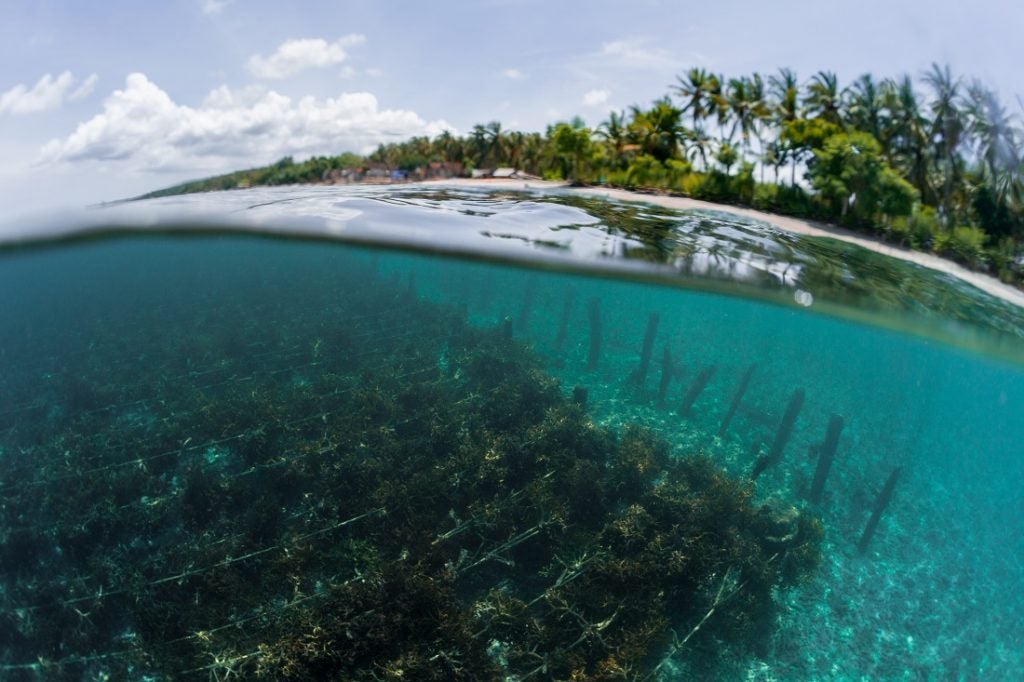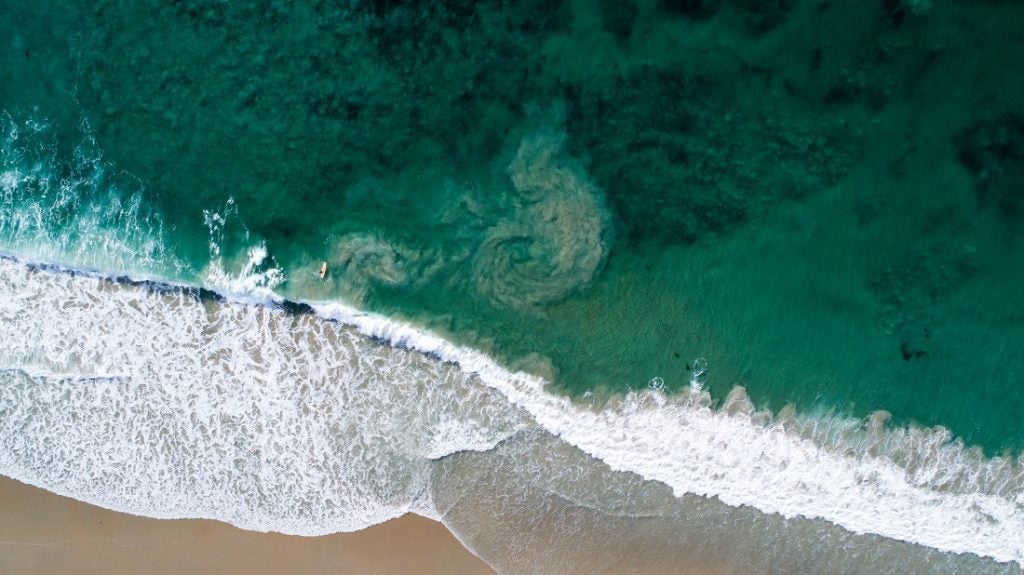Seaweed forests and algal beds cover about 3.5 million square km of our planet — only about 1% of the ocean’s surface — but these amazing ecosystems generate benefits to people and nature far out of proportion to their size. The economic and social values derived from seaweed are impressive: about 650,000 people are employed in the seaweed gathering, farming and processing industry, which generated about $13.8 billion USD in 2018. Seaweeds help produce nutritious food and ingredients for a huge variety of products, ranging from clean fuel to bioplastics and cosmetics. These products collectively are worth billions of dollars.
But seaweeds are priceless when it comes to ecological and social value. Some of these are well-documented, like the fact that seaweed forests support biodiversity and serve as important nursery areas for fisheries that millions of people depend on for food and livelihoods. In addition, seaweed can improve water quality by removing harmful nutrient pollution (e.g., from agricultural or sewage runoff) directly from the water. There is even some evidence that seaweeds can reverse ocean acidification, at least on local scales.
Seaweeds are priceless when it comes to ecological and social value.
Seaweeds may also be generating many other kinds of benefits, but more research is needed to document them. For example, seaweed may be helping to moderate climate change by sequestering carbon in our oceans — and with further research, seaweeds may be capable of doing even more to stave off catastrophic climate change.
Seaweed beds and carbon sequestration
Seaweed beds capture carbon dioxide at annual rates that rival those of the most productive ecosystems on the planet. Seaweeds store carbon in their stipes and fronds. Then, as some of the fronds are shed, some of the carbon captured by seaweeds ends up staying in ocean sediments or in the deep sea, where it may be sequestered for centuries at rates that are almost 30 times greater than those of terrestrial ecosystems per unit area. A recent study suggests that seaweed forests and seaweed farms might already be sequestering as much as 173 million metric tons of carbon every year this way, even without any help from us.
It will take more data and modeling to come up with an accurate estimate of how much carbon seaweeds are sequestering right now. But it does seem clear that seaweeds could sequester much more carbon if we can figure out how to do three things:
- restore seaweed beds that have been degraded
- farm more seaweed
- use the seaweed in ways that sequester carbon and produce other benefits
Restoring seaweed beds
We have probably reduced the natural capacity of seaweeds to sequester carbon in a number of ways, so first and foremost, we must reverse course and restore seaweed beds. Coastal development, poor land use that results in excessive erosion and the dredging of nearshore ecosystems have all contributed to the loss of natural seaweed beds. In addition, overfishing of the predators of seaweed grazers may have contributed to the overgrazing of some seaweed beds, in combination with other factors. So, one way to increase the ability of the ocean to absorb carbon dioxide safely is to do all that we can to stop degrading seaweed beds and restore those that have been degraded. In doing so, we would also reap multiple other benefits like more food, more habitat for biodiversity and enhanced fisheries.
Seaweed farming
Another way to expand the capacity of seaweed to absorb carbon is to farm more of it. Because seaweeds have no roots and get their nutrients from ocean water, it’s possible (at least conceptually) to grow seaweed anywhere in the ocean where sufficient light and nutrients are available. Only about 0.003% (1600 km2) of the total amount of ocean area scientists think is suitable for seaweed farming (48 million km2) is currently used for that purpose. So, the potential to increase the amount of atmospheric carbon that is sequestered by seaweed could be quite large, depending on how the seaweed farms are designed, where they are deployed and — importantly — what we do with the seaweed.
Using seaweed wisely
Seaweed farms can produce many different kinds of social, economic and ecological benefits. But there is no free lunch in nature or in economics. Tradeoffs will almost certainly arise. For example, growing seaweed in the open ocean and then sinking it into deep ocean water might maximize carbon sequestration but reduce other benefits like food or nutraceutical production. Moreover, sinking enough seaweed to significantly affect atmospheric CO2 levels could pose risks to deep ocean ecosystems.
Or consider some other scenarios: using seaweed as food is an obvious social benefit in a hungry world, but this would result in lower rates of carbon sequestration as people respire the seaweed carbon back into the atmosphere. Using seaweed to manufacture long-lasting products could increase the sequestration benefit of seaweed farming. Feeding seaweed to cows in order to reduce methane emissions may be a good way to reduce concentrations of a potent greenhouse gas, and active research is underway to fully document this. Putting seaweed into the feed used to grow finfish in fish farms could reduce the ecological footprint associated with the production of feed the conventional way (with fishmeal and fish oil made from wild harvested fish). Using seaweed as a fertilizer and soil amendment may result in food production (on land) and some carbon sequestration (in the soil), but not generate as much revenue as some of the other options.
Rising to the challenge
Our challenge will be to find ways to minimize the tradeoffs inherent in capturing the many benefits that seaweed can provide while generating profits so that seaweed farming scales up. Seaweed farmers and harvesters may do well by doing good, for example by selling seaweed into diverse markets, some that generate high economic value (e.g., food, nutraceutical production, etc.) and some that generate high levels of ecological benefits. Or planning processes could be used to ensure that a nation is producing a portfolio of social, economic and ecological benefits from seaweed by incentivizing the creation of different kinds of seaweed farms in its waters.
Differences in how seaweed harvesting operations are managed, where the yield goes, and where the seaweed forest or farm is located will have dramatic effects on the benefits and risks associated with that seaweed forest or farm. So planning, analysis and design all matter — a lot — if we want to realize the full suite of benefits that seaweed forests and farms can provide.
If this sounds challenging, that’s because it is. Preventing catastrophic climate change and helping our planet become more resilient in the face of massive habitat degradation, climate change and overexploitation is hard. But I am confident we can enlist seaweeds as a powerful ally. It will require a new way of thinking and doing that regenerates natural processes rather than mines them. We have the means to do this, including the means to restore seaweed forests and expand seaweed farming in ways that deliver massive benefits for society and for the environment. But can we rise to the challenge? Do we have the will and the wisdom to do it?












